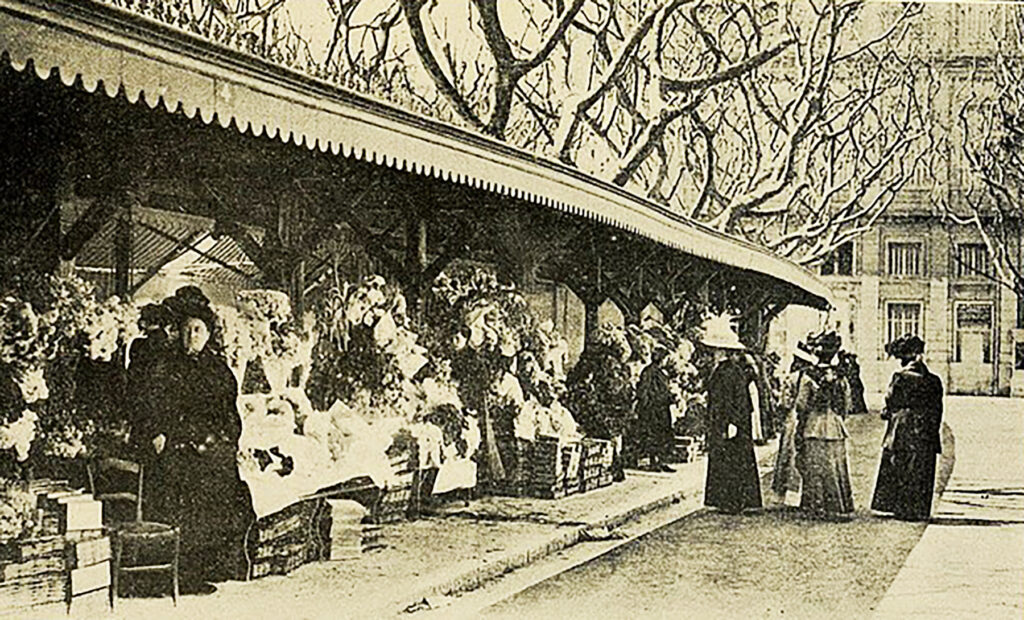In America we call it the humble grilled cheese sandwich.
Bread has been a staple for a very long time – as far back as 8000 BC (over ten thousand years ago). Cheese is “newer” – dating back to 7200 BC or over nine thousand years.
Bread making probably began when humans shifted from nomads to farmers. The oldest bread remains were found by Amaia Arranz-Otaegui, in an archeological site where she was collecting dinner remains from hunter-gatherers in Jordan. They were 14,000 years old!
Making cheese was probably an accident that predates recorded history. Food historians believe it began by storing milk in the bladders of hoofed animals where rennet enzymes were plentiful.
No one knows for sure, although it’s believed that both Greeks and Romans enjoyed many different cheeses. According to Wikipedia, “the earliest cheeses were sour and salty, similar in texture to rustic cottage cheese or present-day feta.”
Both bread and cheese were staples: food for the poor as well as the rich.
Many of today’s cheeses were originally made by Medieval monks in their monasteries – such as parmigiana, gouda, pecorino, gorgonzola, and camembert.
The first pairing of cheese and bread goes back to the Roman times. Old cookbooks talk about putting cheese on bread and heating it.
What could be bad?
According to Joanne Chen in Daily Beast, “even back then, humans knew that something good would come out of melting cheese on bread.”
By the early 1900s, cheese was sold around the world in places like the French market below.
Today’s American-style grilled cheese sandwich was the new kid on the block.
It started with processed cheese. In 1911, Walter Gerber and Fritz Stettler in Switzerland invented processed cheese. They melted Emmentaler cheese, added emulsifiers, and cooled it into a solid. The cheese had a much longer shelf life.
A few years later in 1916, Canadian-born inventor and entrepreneur, James Kraft (who had emigrated to Buffalo, NY in 1902) applied for a U.S. patent for his method of making processed cheese. His company was called Kraft & Brothers.
Sound familiar?
Around the same time, Otto Frederick Rohwedder invented a bread slicing machine. Known as “the father of sliced bread” Rohwedder’s invention made distributing evenly-sliced bread easier and more affordable.
Processed cheese and evenly-sliced bread were a match made in heaven.
Dining out was the rage in the 1920s. Grilled cheese was open-faced with grated American cheese and popular toppings such as tomatoes, pineapple, and bacon. During the Great Depression (1930s), people “stretched” the meal by adding a second slice of bread and sometimes eggs, ham, or bacon. It filled the belly during tough times. They called it, appropriately, “cheese dream”
According to Cheesy Street Grill, “By the time World War II was in full swing, cooks on navy ships prepared thousands of ‘American Cheese Filling Sandwiches’ as instructed by government-issued cookbooks.”
The sandwich really took off in the 1960s. Kraft introduced “singles” – individually wrapped slices of processed cheese – and supermarkets carried them throughout the country. A second slice of bread was always part of the recipe, permanently changing the name to “grilled cheese sandwich.”
Today grilled cheese is both a staple and comfort food. It’s made from different breads, cheeses, endless toppings, and served with sides like salad and tomato soup. It’s loved by both children, adults, and everyone in-between.
Whether you make grilled cheese at home, order it in a five-star restaurant or a food truck, it’s hard to find someone who doesn’t like it. According to the South Florida Reporter Americans eat 2.2 billion grilled cheese sandwiches each year.
That’s a lot of crispy bread and melty cheese.





Love your sandwich model!
Thank you very much for the detailed information, it helped me a lot. https://www.bleedcubbieblue.com/users/Play-Sikkim-Lottery